Top 8 Most Beautiful Historical Sites in Cambodia
When most people think of vacationing in Cambodia, they imagine laying on the beach with a book or going for a walk in the highlands to breathe in the fresh ... read more...air. People may visit museums or art galleries, as well as notable architecture and natural sights. Cambodia, however, has much more than that. As a country with a rather complicated history, the country has historical places that are well worth a visit. Today, let's follow Toplist to discover the most beautiful historical sites in Cambodia.
-
Angkor Wat is unsurprisingly one of the most popular destination and the most beautiful historical sites in Cambodia.
Angkor Wat is Cambodia's largest and best-preserved temple complex, dating from the 12th century. The sand-colored buildings of Angkor Wat climb up to form five towers, depicting the Hindu deities' dwelling. Friezes and sculptures may be seen throughout the building, reflecting both everyday life and religious events from the time it was created.
While Yasovarman I, King of the Khmer Dynasty, is assumed to have established the Angkor complex around 980 AD, Angkor Wat is thought to date from the 12th century. Between 1113 and 1150, the Khmer ruler Suryavarman II constructed Angkor Wat. Suryavarman as Vishnu is shown in sculptures around Angkor Wat, and he dedicated it to the Hindu deity Vishnu. Mount Meru, the sacred abode of the Hindu gods, is also supposed to be represented by Angkor Wat. Suryavarman's tomb is also considered to have been located at Angkor Wat.
After being sacked in the late 12th century, Angkor Wat was changed from a Hindu to a Buddhist temple. After the 16th century, it was extensively neglected but never completely abandoned. Henri Mouhot, a French explorer,'rediscovered' the place in 1860 and popularized it in Western culture through his writings.Despite the stormy politics of late twentieth-century Cambodia, Angkor Wat suffered little damage. Thai art thieves were the ones who inflicted the most havoc, chopping heads off as many structures as they could. Since 1992, Angkor Wat has been a UNESCO World Heritage Site.
Location: Siem Reap, Cambodia
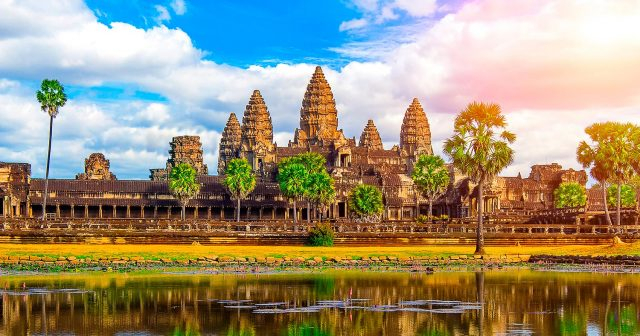
Photo: vntrip 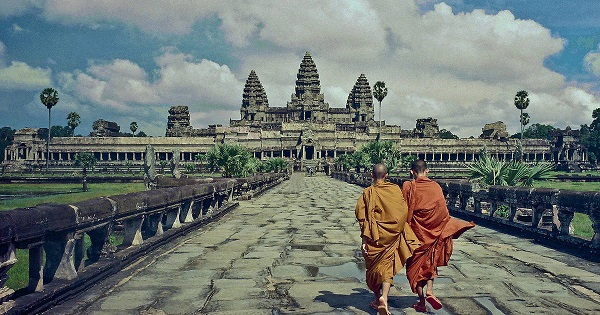
Photo: tour.dulichvietnam -
The Preah Vihear Temple is a historic Angkorian temple devoted to the Hindu deity Shiva, located on the Cambodia-Thailand border. Thailand has been ordered to evacuate a military presence that has been stationed around the temple since 1954, and the site is hotly contested.
The Preah Vihear Temple's first history may be traced back to the ninth century AD, while the temple itself, as seen today, is largely from the eleventh century. The Preah Vihear Temple was built by the Khmer Empire's rulers, first by King Suryavarman I (1002-50) and later by Suryavarman II (1002-50). (1113-50).
The Preah Vihear Temple's position, high atop the Dângrêk Mountains, is possibly the most stunning part of the temple, which is made up of a number of sanctuaries known as "gopuras" and well-preserved complex stone buildings.This spectacular position, however, is one of the reasons why the Preah Vihear Temple receives fewer visitors than other Angkorian temples such as Angkor Wat. The ownership of the Preah Vihear Temple has been a source of conflict between Cambodia and Thailand for many years, and has almost resulted in war.
Although the Preah Vihear Temple is officially located in Cambodia, it is more easily accessible from Thailand. Soldiers from both sides are still stationed at the site, and it remains a dangerous environment. In 2008, UNESCO listed the Preah Vihear Temple, which was also a contentious issue.
Location: Choam Khsant, Preah Vihear, Cambodia
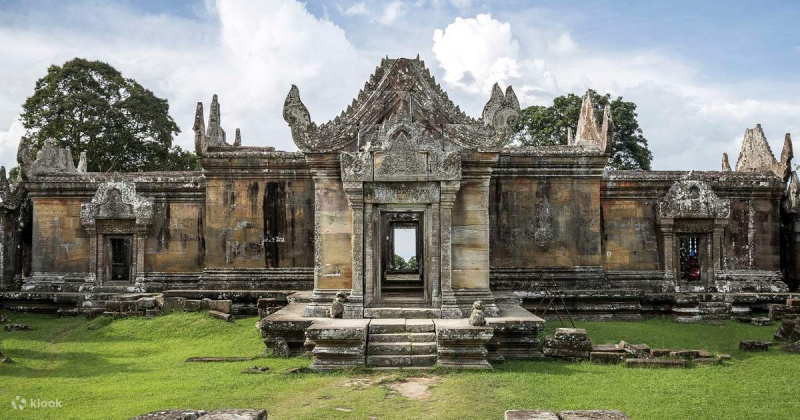
Photo: klook 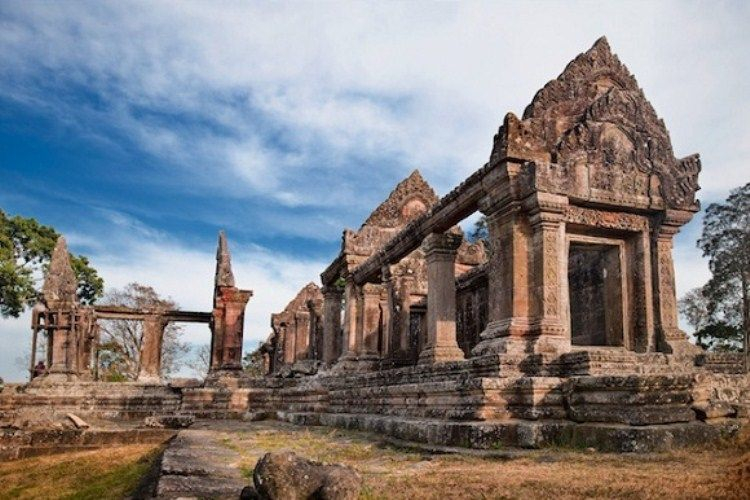
Photo: vivutravel -
Phnom Kulen is one of Cambodia's great sacred mountains, located about 50 kilometers from Siem Reap. The mountain is also a significant Khmer pilgrimage destination and one of numerous UNESCO-protected sites since 1992.
Phnom Kulen, the legendary mountain, is a day-hiking destination. Staying in a temple and hiking through the limestone plains and woodlands are also options. The gigantic rock sculptures of Sra Dumrei can be seen at the bottom of the forest.
The Thousand Lingas River and its spectacular waterfalls are one of Phnom Kulen's key attractions. This water reserve is also the source of the Siem Reap River. Thousands of Khmer stone slabs can be found at the river's bottom. It's also a popular spot for travelers to have a picnic. Visitors can join in daily life while admiring the beauty of the river during their visit.
Location: Svay Leu District, Siem Reap Province, Cambodia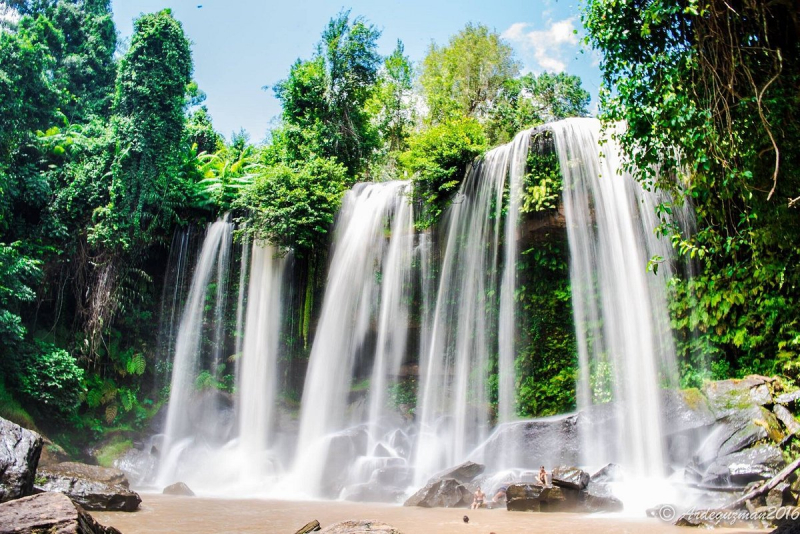
Photo: tripadvisor 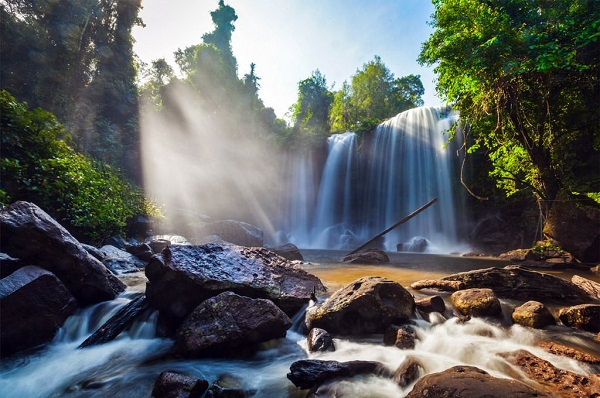
Photo: tour.dulichvietnam -
Bokor Hill Station is a collection of French colonial buildings built in the early 1920s atop Bokor Mountain in Preah Monivong National Park, some 37 kilometers west of Kampot in southern Cambodia, as a temperate mountain luxury resort and retreat for colonial people. After being abandoned for a long time, modern infrastructure has made the site easily accessible while redevelopment takes place. It was the setting for the last fight in the films City of Ghosts (2002) and R-Point (2004). The Povokvil Waterfalls are located to the northeast. These are also proof that it belongs to one of the most beautiful historical sites in Cambodia.
The National Highway 3 provides direct access to Bokor Hill Station. The hill station is now deserted. The region is popular with both Cambodian and international tourists, and it is partially signposted.Location: Campot, Cambodia
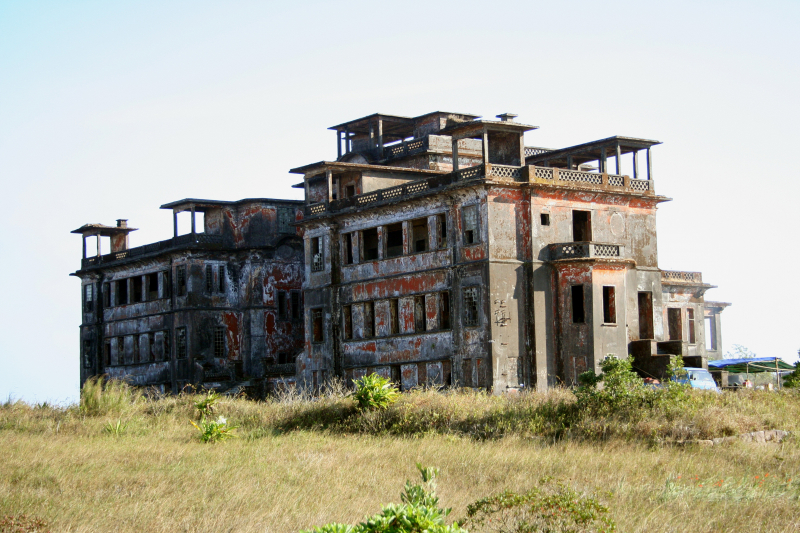
Photo: wikipedia 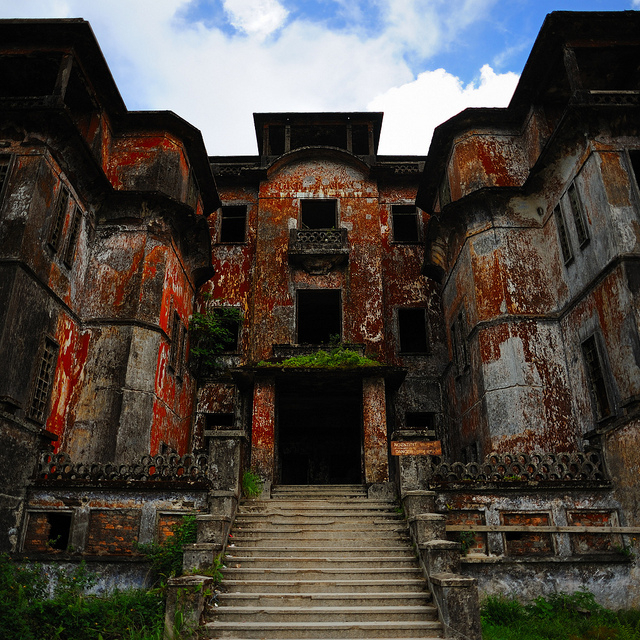
Photo: kuriositas -
Tuol Sleng Genocide Museum in Phnom Penh, Cambodia's capital city, was a renowned prison under the Khmer Rouge and is now a museum. Its name means 'Hill of Poisonous Trees.' The Tuol Sleng Genocide Museum was once a high school before being repurposed into Prison S-21 by the Khmer Rouge.
The Khmer Rouge was a Cambodian communist party faction led by Pol Pot that ruled from 1975 until 1979. They launched a mass genocide campaign that resulted in the deaths of over two million people in just four years.
While the majority of the victims were sent to the Killing Fields to be slain, the Tuol Sleng Genocide Museum was also a key location in the horrors. Over 17,000 people were deported to Prison S-21, where they were made to work and tortured.
S-21 was designed to detain captives before being sent to the Killing Fields, but many died of famine, disease, and abuse before reaching their destination. The invading Vietnamese discovered the prison in 1979, and it was reopened as a museum in 1980.The Tuol Sleng Genocide Museum allows visitors to see the building in a same state as it was when the Khmer Rouge regime fell, with signs of the torture visible everywhere. A dramatic collection of victims' images – shot as they arrived at the prison – as well as many of their testimonies can be seen in the Tuol Sleng Genocide Museum. At the location, guided excursions can be organized.
Location: Phnom Penh, Cambodia
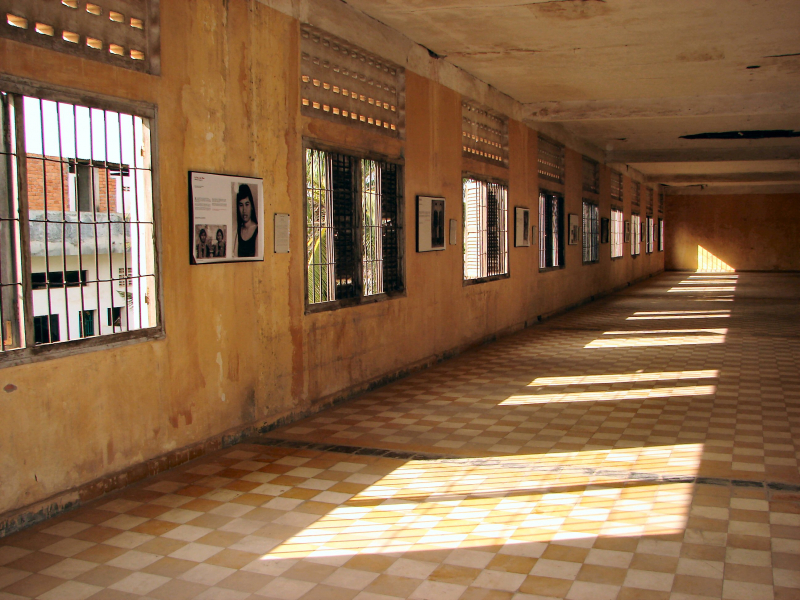
Photo: wikipedia 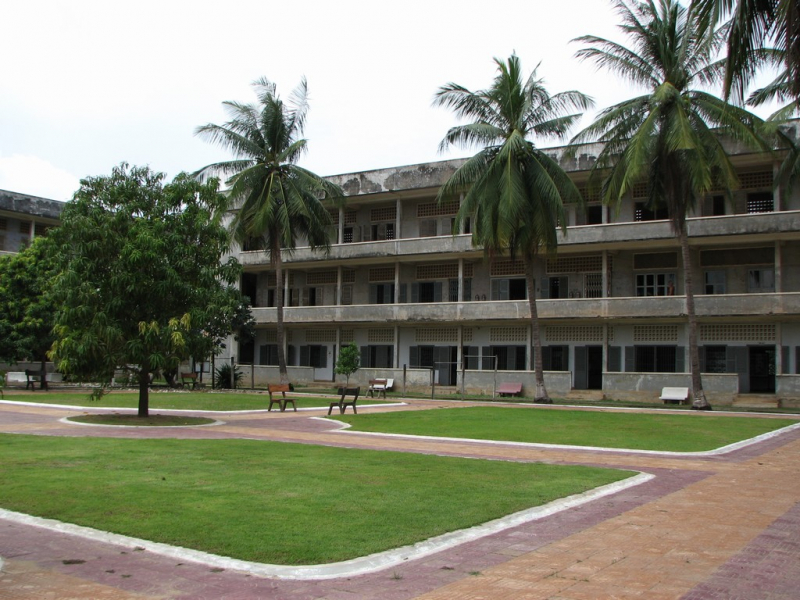
Photo: wikipedia -
Choeung Ek, Cambodia, is a former orchard that served a nefarious function during the Khmer Rouge's reign: it became known as The Killing Fields, and it is estimated that over 17,000 men, women, and children were murdered and buried there.
Choeung Ek, about 17 kilometers south of Phnom Penh's city center, was utilized by the Khmer Rouge, the communist party that controlled Cambodia from 1975 to 1979, as a "re-education camp." Over 1.7 million people were killed by the Khmer Rouge during their reign of terror: the regime waged a campaign of mass genocide against everyone accused of belonging to one of the numerous categories of alleged opponents.
Before being brought to the former longan orchard, prisoners were imprisoned and tortured at the S-21 prison. Choeung Ek is thought to have slaughtered and buried approximately 17,000 people. Many of their remains (including 8000 skulls) constitute the centerpiece of the memorial monument at Choeung Ek, in the form of a Memorial Stupa, which was unearthed from a mass grave in 1980.
Many of the burials have been left undisturbed out of respect, however, there are shards of bone, teeth, and bloodied linen on the site. Every year on May 9th, survivors of the Khmer Rouge, their families, officials, and Cambodians gather at the stupa to pay their respects and remember what happened.
There's no disputing that a trip to Choeung Ek is depressing: the incredibly informative and frequently horrific audio tour is well worth listening to, though it's worth considering whether the topic is appropriate for toddlers and younger teenagers. An ex-guard and executioner at Choeung Ek gives a particularly harrowing experience. Because this is a memorial, please dress appropriately and act properly. If at all possible, avoid taking photos of the human remains on display.
Location: Phnom Penh, Cambodia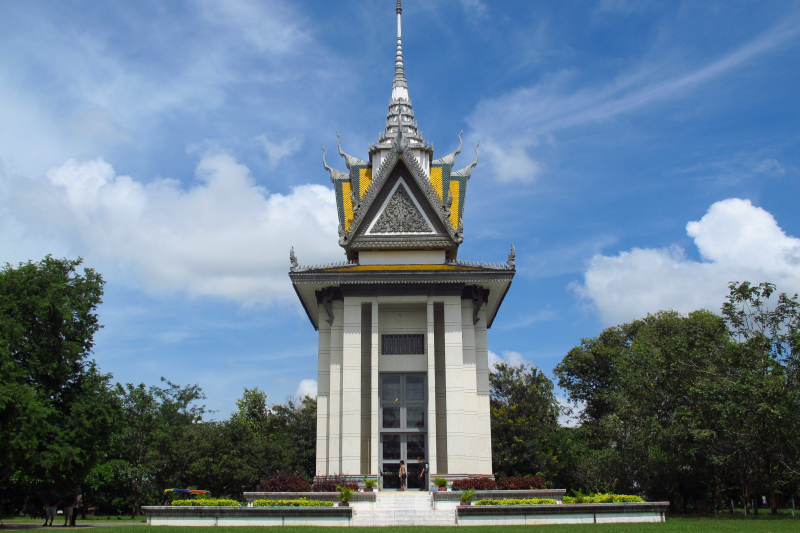
Photo: wikipedia 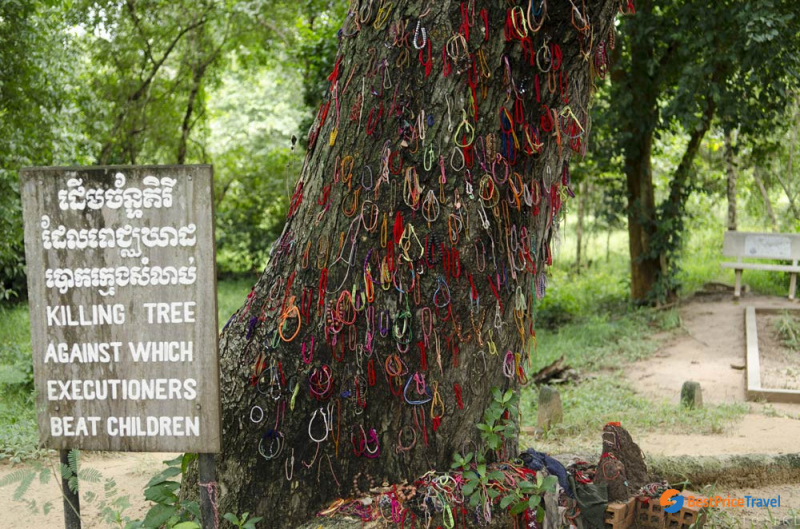
Photo: bestpricetravel -
Kep is a municipality that also has provincial status. It is also a coastal resort and one of Cambodia's most popular tourist destinations.
The colonial government created Kep in 1908 so that the French nobility and public officials in Phnom Penh could escape the heat of the Cambodian capital and relax by the sea. After the French left, Prince Norodom Sihanouk decided to refurbish the coastal resort and build a magnificent home with a view of the Gulf of Thailand in the early 1960s.
Kep rapidly became a ghost town after the Khmer Rouge took power in 1975. The villas and mansions, which formerly served as a symbol of Cambodia's decadent bourgeoisie, have now become abandoned, with some being razed. Kep did not experience a new boom until the early 2000s, with the expansion of international tourism, which was more controlled than its competitor, Sihanoukville.
Today, Kep promotes itself as a beachfront resort with a diverse range of activities. Visitors may unwind on the sandy beaches and take in the tranquil ambiance.
Location: Kep Province, Cambodia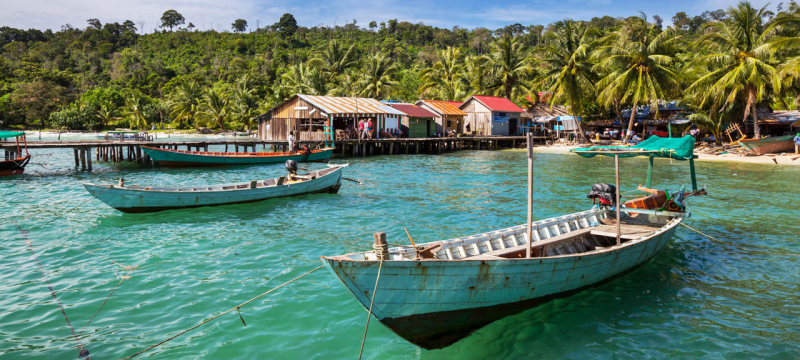
Photo: trailsofindochina 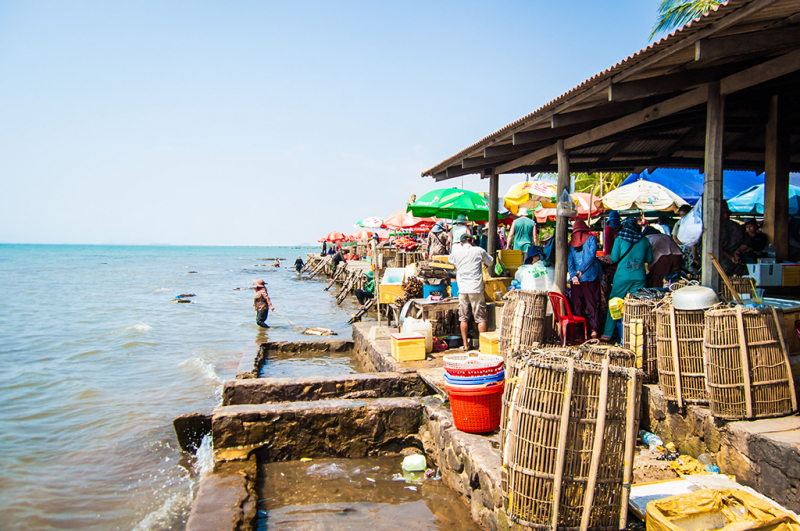
Photo: hatienvegas -
Phnom Sampeau is the region where the Khmer Rouge destroys human bodies, and it's just as creepy as the field of death. The victims were dragged to the cave's top and beaten to death with sticks. The Khmer Rouge soldiers then pushed their bodies down into the tunnels below.
Visitors today visit the Killing Caves, which have been kept as a tribute to those who were killed and drowned in the darkness. Unidentified victims' bones are kept in glass cases in the caves, while other random bone collections are kept in wooden crates as a reminder of their history.
Every late afternoon, a crowd of curious people gathers here to witness a breathtaking scene. Thousands of bats appear to emerge from a cave to begin their nighttime hunt. Every evening, many species of bats put on a beautiful show by emerging from their hiding tunnels and forming a whirling spiral into the night sky.
Location: Cambodia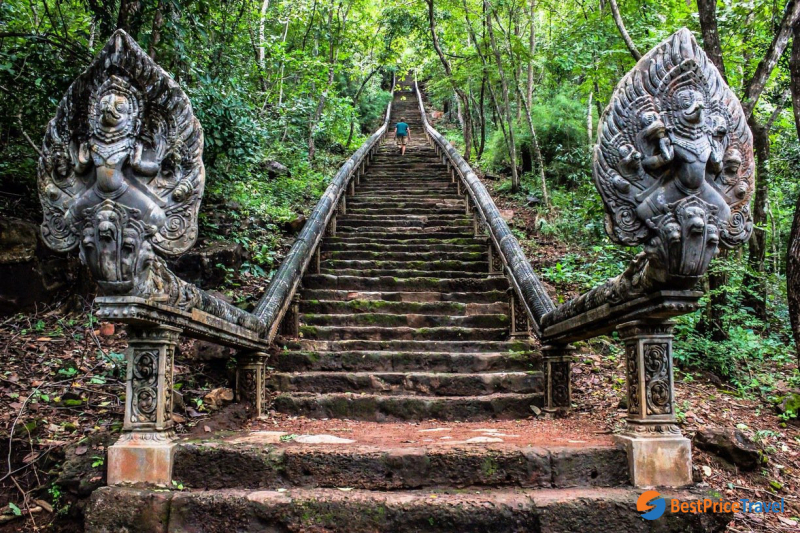
Photo: bestpricetravel 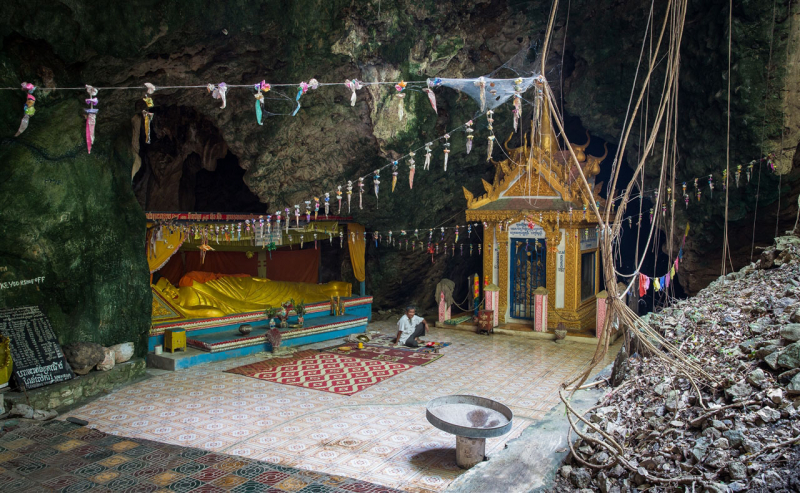
Photo: kevinstandagephotography





























